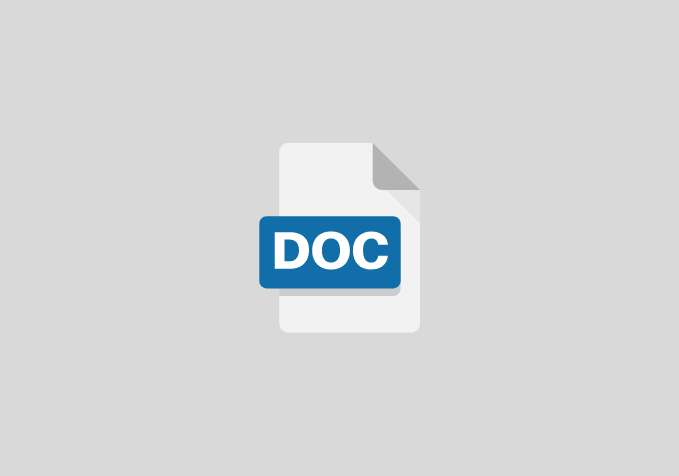Evaluation of Rural Transportation and It’s Environment
CHAPTER ONE
Objectives of the study
- To determine the contribution of transport service to economic development.
- To provide possible suggestions the transport system and transport facilities in rural and agricultural communities.
- To provide some insights for researchers who are interested in conducting studies in the area.
CHAPTER TWO
REVIEW OF RELATED LITERATURE
Definition of Transport
Transport as a physical moving of people and goods accelerating development and has played a crucial role in gradual development of human kind towards organized human society (Atnaf Seged ,1988).
On simpler definition “Transport” refers to the movement of people and goods between destinations. So that transport is multifaceted sector that promotes economic and social development of any nation (Alemseged, 1988).
Transport permits the whole of civilized life, like the arteries and veins in the human body and also, transport services take people to place where they want to go and deliver goods to place to place where people require them (Temesgen, 2003).
Reliable transportation is critical to helping rural communities and community members remain healthy and productive, it is what binds community together and supports economic growth.
Rural residents need to receive medical care, get to work access child care, purchase food and house hold items, attend school events, and access many other services just as their urban counter parts.
Frequent accessibility is restricted or limited because of the distance to those services or opportunities and the lack of public and private transportation. Often special needs that can be alleviated through medical facilities, soil service agencies and educational programs are forgone because of the distance to be traveled.
The bureau of Transportation statistics show that 11% of rural residents live without the coverage of transport.
Transportation is also pivotal factor in determining whether the disabled and aged populations are able to remain in their homes and their communities.
Totally enhancing transportation opportunities for a rural community can be improve economic growth and community development that will ensure quality of life for residents in rural environments. (U.S. Rural population Transportation, 2010)
CHAPTER THREE
RESEARCH METHODOLOGY
Research Design
In defining research design, Odo (1992:43), stated that research design implies outlining the name of equipment and other materials the research intends using, applying some to successfully execute the practical aspect of the research study.
A descriptive survey method was used for this study. It is important to determine the method and procedure adopted in this research report since it gives the reader background information on how to evaluate the findings and conclusion.
Population Of The Study
The researcher has chosen farmers and transporters in Epe LGA in Lagos state as the studied population in order to find a possible solution to the research problem.
CHAPTER FOUR
DATA ANALYSIS AND PRESENTATION
Bio-Data of Respondents
The presentation of data shall begin with the demographic variables of
respondents as depicted in table 4.1 to table 4.4.
CHAPTER FIVE
CONCLUSION AND RECOMMENDATIONS
CONCLUSIONS
Basically the study indicates that there is a potential to supply a crop production to the market but there is no sufficient means of transport for transporting and this may be the problem of community awareness about the merits of using means of transport.
The rural community demanded highly industrial products to satisfy their basic needs and to improve their living standard. But they are sufficient to transport those products to their village mostly they transport using head loading and animal drawn back.
RECOMANDATIONS
In order to suggest possible solution to the problem the writer forwarded the following recommendations.
As the study indicates in the rural community there is no sufficient means of transportation, those intermediate means of transport should be local transport solution it is better to spread in rural areas including the bicycles horse courts and donkey and hand courts. Adoption of such transport innovation has tended to result in social and economic differentiation.
Those are able to profit from investments in transport gain more time more income generating options.
REFERENCES
- Almeseghed Ghibre, (1986): Geography of transport and development, Ethiopia.
- Atnafeseged Kifle, (2002): Transport management, Ethiopia – transport planner and traffic engineer at freelance consultant, Addis Ababa, Ethiopia.
- Barwell, (2001): Use study on the intermediate means of transport and Women transport burdens, Manuscript Preparation Guidelines for the CIGR-Ageng Conference, Available at : www.cigr.ageng2012.org/images/fotosg/tabla_137_C2343.pdf.
- Christina Malmery calle, (1994): Case study on role of women in rural Transport.
- Ellis, (1996): Availability of animals, Available at : www.asian-efl-journal.com/sept_05_re.pdf
- F.D.R.E Era, (2002): Ethiopian Rural Travel Transport Programmed formulation.
- Havard and Faye, (1988) : Sub-Saharan Africa Transport Policy Program – SSATP – World Bank, Available at : www4.worldbank.org/afr/ssatp/Resources/HTML/…/1_eng_references.ht…
- Hince, Ebden and Swan (1997) : Transport and the millennium development goals in africa – World Bank, Available at : www.worldbank.org/transport/transportresults/regions/…/afr- tr&mdg.pdf
- Lalnna (2000) and star key (2001): Investing in intermediate means of transport in Madagascar, Available at : www.piarc.org/ressources/…/9142,5.3_TC3-20_2002_Starkey.pdf
- Paul rurkey, simon Ellis, Sohan Hine and Anna Tenell, (2002): Options for Developed motorized and memorized transport in rural Areas.
- Paul Starkey, (2001): Local Transport solution people paradise and program.


